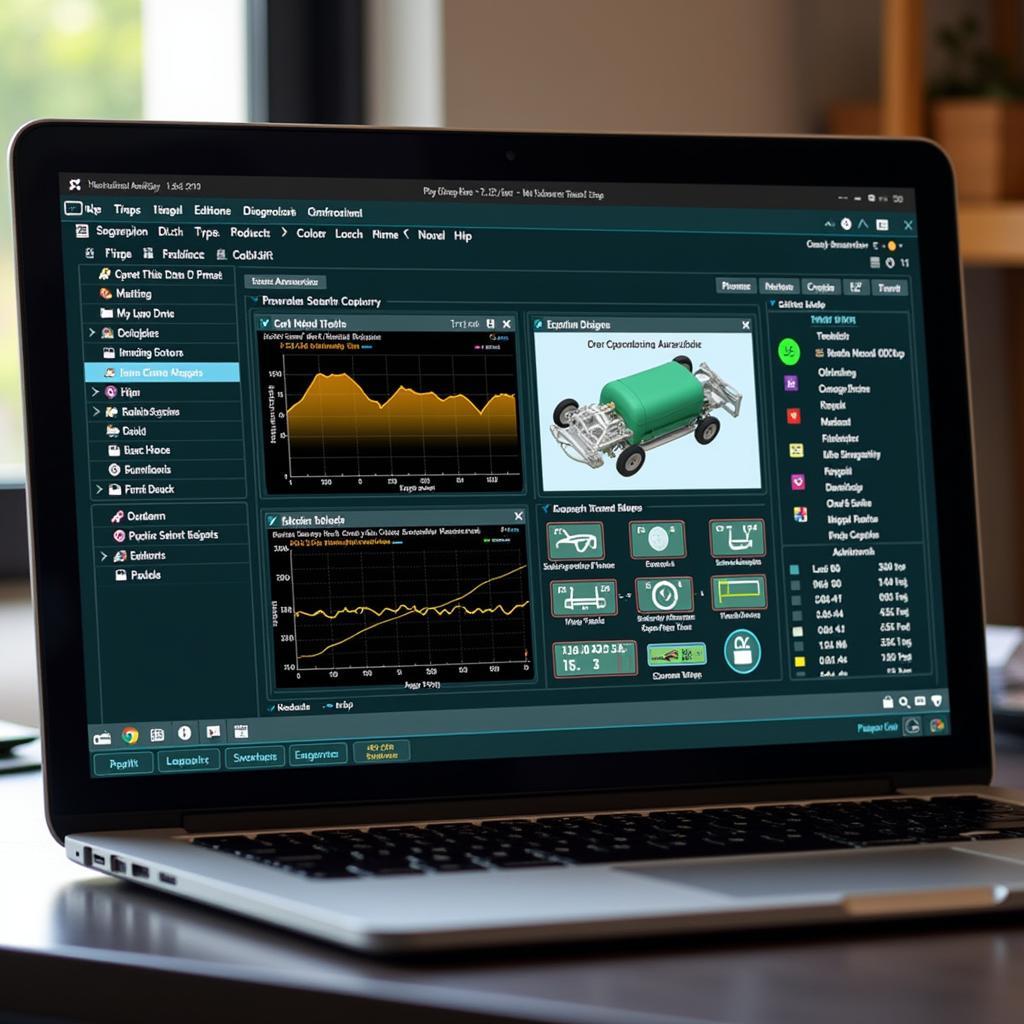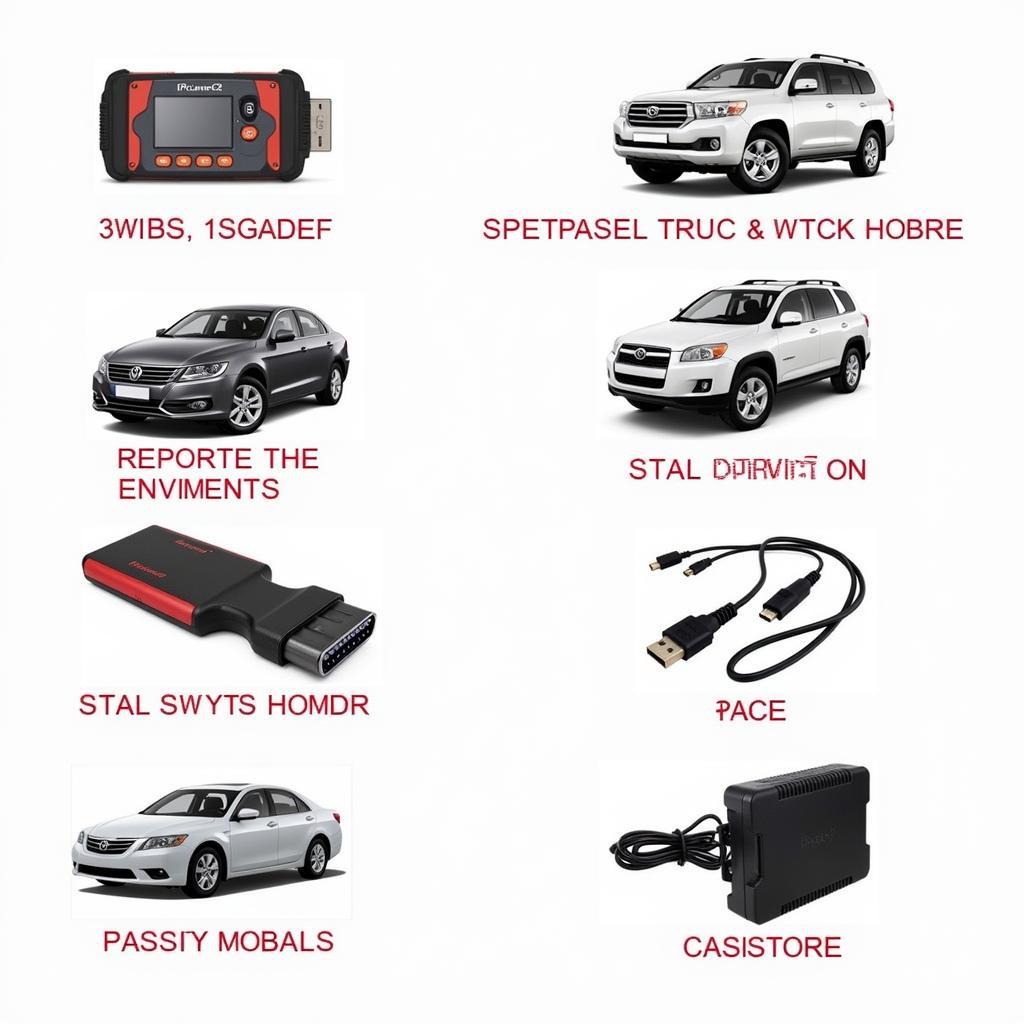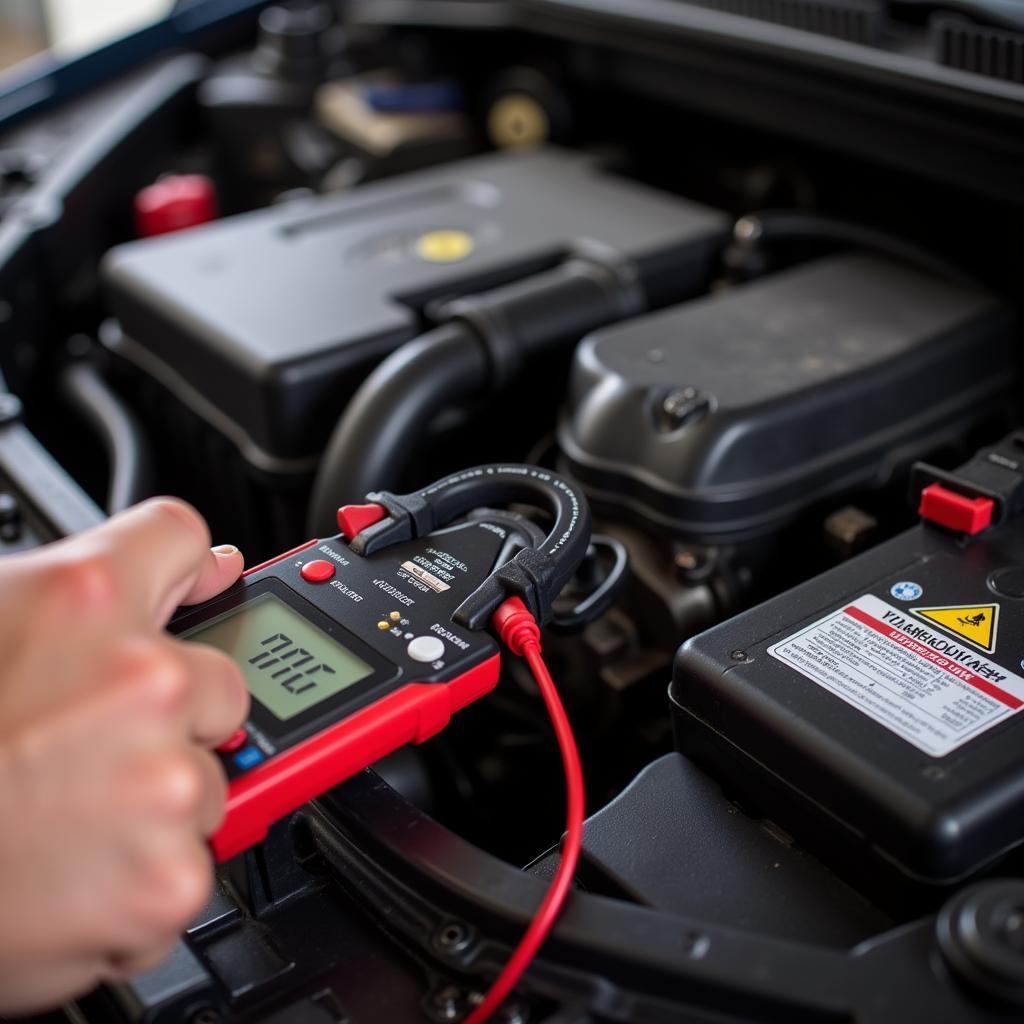The world of automotive repair is rapidly changing. Gone are the days of relying solely on a mechanic’s intuition and a limited set of hand tools. Adding Diagnostic Tools to your arsenal, whether you’re a dedicated DIYer or a seasoned mechanic, is no longer optional – it’s essential. These tools provide a window into the increasingly complex systems within modern vehicles, allowing you to pinpoint issues with accuracy and speed.
Why Diagnostic Tools Are Now Essential
Modern vehicles are equipped with intricate electronic control units (ECUs) that manage everything from engine timing to airbag deployment. When a problem arises, these ECUs generate diagnostic trouble codes (DTCs) that act like breadcrumbs, leading you to the source of the malfunction.
[image-1|diagnostic-tool-connected-to-car|Car Diagnostic Tool Connected|A mechanic connects a sleek, modern diagnostic tool to the OBD-II port of a car, symbolizing the fusion of technology and automotive repair.]
Without the proper diagnostic tools, deciphering these codes and understanding the vast network of sensors and actuators is nearly impossible. Here’s why embracing diagnostic technology is crucial:
- Accurate Diagnosis: Eliminate the guesswork and pinpoint the root cause of problems, saving you time and money on unnecessary repairs.
- Enhanced Efficiency: Diagnose issues quickly, enabling faster turnaround times for both DIYers and professional mechanics.
- Access to Data: Get real-time insights into your vehicle’s performance, including live data streams, historical records, and manufacturer-specific information.
- Preventative Maintenance: Identify potential problems early on, allowing you to address minor issues before they escalate into major headaches.
Choosing the Right Diagnostic Tools for Your Needs
The market is flooded with diagnostic tools, ranging from basic code readers to sophisticated professional-grade systems. The key is to choose tools that align with your skill level, budget, and the types of vehicles you work on.
1. Basic Code Readers:
Ideal for DIY enthusiasts, basic code readers are affordable and user-friendly. They connect to your vehicle’s OBD-II port and retrieve basic DTCs. While they won’t provide in-depth analysis, they’re a great starting point for understanding your car’s health.
2. OBD-II Scanners:
A step up from basic code readers, OBD-II scanners offer more advanced functionality. They can read and clear DTCs, display live data streams, and perform some basic tests on your vehicle’s systems. Many models also provide code definitions and potential repair solutions.
[image-2|mechanic-using-obd-ii-scanner|Mechanic Using OBD-II Scanner in Auto Shop|In a bustling auto repair shop, a mechanic utilizes an OBD-II scanner, its screen illuminating his face as he diagnoses a vehicle’s problem.]
“Investing in a quality OBD-II scanner is like having x-ray vision for your car,” says John Miller, a veteran automotive engineer. “You gain the ability to see what’s going on under the hood without tearing everything apart.”
3. Professional-Grade Diagnostic Systems:
For professional mechanics and serious DIYers, professional-grade systems offer unparalleled diagnostic power. These comprehensive tools combine advanced software with powerful hardware, allowing you to perform a wide range of tasks:
- Bi-directional control of vehicle systems
- Programming and coding of modules
- Key and immobilizer programming
- Advanced ECU diagnostics
The [Carsoft 7.4 multiplexer diagnostic tool software] is an example of a powerful tool that can be used for European vehicles. For those working with American cars and trucks, a [CAT diagnostic tool] can be a lifesaver.
Maximizing Your Investment: Tips for Using Diagnostic Tools Effectively
Simply owning a diagnostic tool isn’t enough. To unlock their full potential, follow these tips:
- Read the Manual: Familiarize yourself with your tool’s features, capabilities, and limitations.
- Understand DTCs: Learn how to interpret diagnostic trouble codes and research their potential causes.
- Utilize Online Resources: Take advantage of online forums, repair manuals, and manufacturer websites for additional information and support.
- Start with the Basics: Begin with simple diagnostics and gradually explore more advanced functions as your confidence grows.
- Keep Software Updated: Ensure your diagnostic software is up-to-date to access the latest features, vehicle coverage, and bug fixes.
Conclusion:
Adding diagnostic tools to your automotive repair toolkit, whether you’re a DIY enthusiast or a professional mechanic, is no longer a luxury but a necessity. These tools empower you with the knowledge and information needed to accurately diagnose and repair the increasingly complex systems in modern vehicles. By investing in the right diagnostic tools and continuously expanding your knowledge, you can save time, reduce repair costs, and keep your vehicles running smoothly for years to come.
Need help choosing the right diagnostic tool? Contact ScanToolUS today at +1 (641) 206-8880 or visit our office at 1615 S Laramie Ave, Cicero, IL 60804, USA.
FAQ:
- Can I use any diagnostic tool on any vehicle? No, compatibility varies. Ensure the tool you choose supports your vehicle’s make, model, and year.
- Do I need a professional-grade system for basic repairs? Not necessarily. Basic code readers and OBD-II scanners are sufficient for many DIY repairs.
- Can diagnostic tools fix problems? No, they primarily diagnose issues. Repairs require mechanical expertise and the correct tools.
- Are diagnostic tools difficult to use? Many tools are user-friendly, especially those designed for DIYers.
- How often should I use my diagnostic tool? It’s a good practice to perform regular checks, especially if you suspect a problem or before embarking on long trips.



